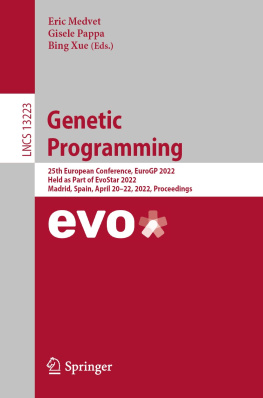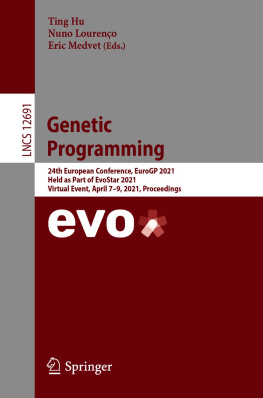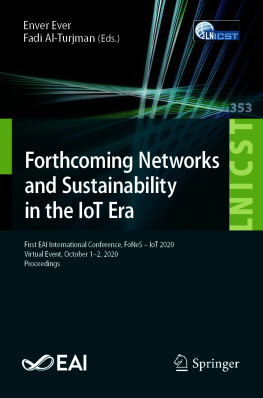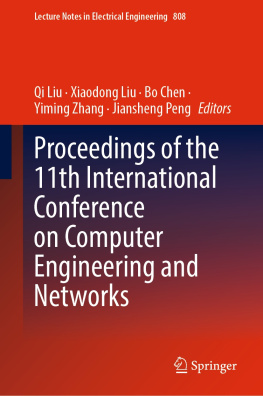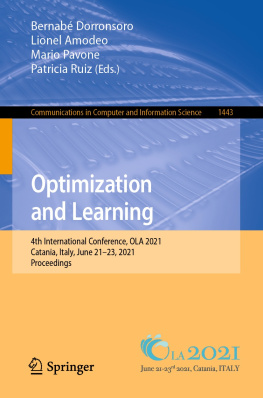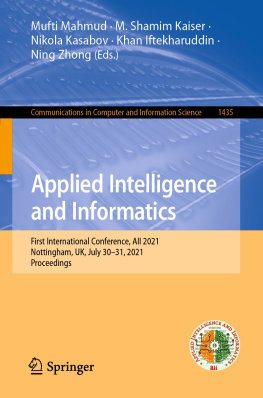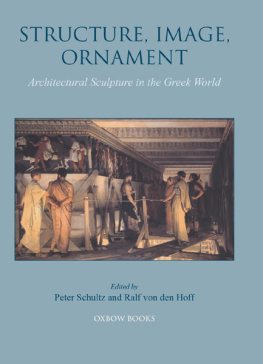THE PALESTINE EXPLORATION FUND ANNUAL IX
Series Editor
Jonathan N. Tubb
The Levant in Transition
THE LEVANT IN TRANSITION
Proceedings of a Conference held at the British Museum on 2021 April 2004
Editor
PETER J. PARR
First published 2009 by Maney Publishing Ltd
Published 2017 by Routledge
2 Park Square, Milton Park, Abingdon, Oxon OX14 4RN
711 Third Avenue, New York, NY 10017, USA
Routledge is an imprint of the Taylor & Francis Group, an informa business
The Palestine Exploration Fund 2009
Statements in The Levant in Transition reflect the views of the authors, and not necessarily those of the Palestine Exploration Fund, editor or publisher.
ISSN 1753-9234
All rights reserved. No part of this book may be reprinted or reproduced orutilised in any form or by any electronic, mechanical, or other means, now known or hereafter invented, including photocopying and recording, or in anyinformation storage or retrieval system, without permission in writing from the publishers.
Product or corporate names may be trademarks or registered trademarks, and are used only for identification and explanation without intent to infringe
ISBN 13: 978-1-904350-99-6 (hbk)
CONTENTS
JONATHAN N. TUBB (BRITISH MUSEUM, UK)
RUPERT L. CHAPMAN III (BRITISH MUSEUM, UK)
KAREN COVELLO-PARAN (ISRAEL ANTIQUITIES AUTHORITY, ISRAEL)
CLAUDE DOUMET-SERHAL (UNIVERSITY COLLEGE LONDON, UK)
RAM GOPHNA (TEL AVIV UNIVERSITY, ISRAEL)
MOTI HAIMAN (ISRAEL ANTIQUITIES AUTHORITY, ISRAEL)
MOSHE KOCHAVI (TEL AVIV UNIVERSITY, ISRAEL)
MINNA LNNQVIST (UNIVERSITY OF OULU, FINLAND)
DANIELE MORANDI BONACOSSI (UNIVERSIT DEGLI STUDI DI UDINE, ITALY)
FRANCES PINNOCK (UNIVERSITY OF ROME, ITALY)
KAY PRAG (UNIVERSITY OF MANCHESTER, UK)
SUZANNE RICHARD (GANNON UNIVERSITY, USA) AND JESSE C. LONG, JR. (LUBBOCK CHRISTIAN UNIVERSITY, USA)
R. THOMAS SCHAUB (INDIANA UNIVERSITY OF PENNSYLVANIA, USA)
JONATHAN N. TUBB (BRITISH MUSEUM, UK)
PETER J. PARR (UNIVERSITY COLLEGE LONDON, UK)
T HIS VOLUME, The Levant in Transition, draws together the papers presented at a two-day conference of the same name held at the British Museum in April 2004. The purpose of the conference was to examine, in the light of recent research, the still-enigmatic period at the end of the urban Early Bronze when the southern and central Levant witnessed a period of profound economic recession coupled with population dislocation. The interpretation of this period, often referred to as the Early Bronze IV period or the Intermediate Bronze Age, has implications which extend far beyond the local level of the southern and central Levant, however, and challenge our perspectives on contemporary societies in Egypt, Syria, Anatolia and Mesopotamia. By bringing together leading scholars involved in research in all of these regions, it was hoped that a new consensus might emerge.
In the event, and perhaps not surprisingly, no such consensus was achieved, but what clearly manifested itself was a revival of interest in what had become something of a neglected period. The papers presented a broad range of perspectives on and insights into the complexities of late third millennium culture and society not only from a southern Levantine viewpoint, but from the neighbouring regions of Syria and Lebanon to the north and Egypt to the south.
The conference was exciting and stimulating, and much of the events atmosphere is captured in the proceedings. The papers are published as approved by their authors in March 2007. I am most grateful to Peter Parr, who not only chaired two of the conference sessions, but who undertook to edit the papers and help prepare this fine volume.
JONATHAN N. TUBB
RUPERT L. CHAPMAN III
CHRONOLOGICAL RELATIONS: THE DATE OF THE END OF EB III B
F OR MANY YEARS the date of the end of EB III in Palestine, Lebanon and Coastal Syria was set at c. 2200 BC (Albright 1957, 404405; 1965, 57; Kenyon 1966, 6; 1979, 119), and EB IV was said to correspond in date to the First Intermediate Period in Egypt. This dating received a powerful challenge with Hennessys demonstration that the latest dateable Egyptian objects found in Palestine, the collection from Sanctuary A at cAi, contained nothing later than the Fifth Dynasty (Hennessy 1967, 6971, 74). Consequently, Hennessy raised the date of the end of EB III to a date not later than c. 23502300 BC. This analysis, combined with the clear evidence discussed above, and the assumption (following Albright: see especially 1965, 4749) that taxonomically discrete assemblages in Palestine must represent discrete spans of time, never overlapping one another chronologically, has led to a general acceptance of a date of c. 24002300 BC for the end of EB III (e.g., Dever 1980, fig. 1; Callaway 1980, 273).
There are several points which are important to remember about this dating. The first is that there is no radiocarbon evidence concerning the date of the end of EB III (Callaway and Weinstein 1977, 1012). The second is that Callaways renewed excavations at cAi began only three years before Hennessys study was published; only one preliminary report on the renewed excavations had appeared before publication of Hennessys study (Callaway 1965), and this was not referred to by Hennessy. Moreover, it is clear that Callaway, who in 1965 (37, fn. 25) agreed with Hennessys views concerning the contemporaneity of Sanctuary A with the Egyptian alabasters found there had changed his mind by 1972 (292293). In his final report on the renewed excavations of the Sanctuary at cAi, Callaway demonstrates beyond reasonable doubt that Sanctuary A was originally constructed in Phase VI as an ordinary house, and modified extensively in Phase VII in order to convert it into a sanctuary (Callaway 1972, 247297). Although the full details have not yet been published, it seems that the great temple constructed at Callaways Site D in Phase VI was changed into a residence (possibly for the ruler of cAi) in Phase VII (Callaway 1972, 292293). Moreover, Callaway, in his re-analysis of the artefacts from the final occupation of Sanctuary A, preferred to date all of the objects regarded by Hennessy as Fourth or Fifth Dynasty Egyptian as either earlier (Callaway 1972, 300) or non-Egyptian (1972, 303304). This is particularly important in the case of the votive cups (Callaway 1972, 303304, figs. 73: 12, 47, 76: 116, 77: 4, 78: 2, 79: 1). Callaway suggested that the cAi cups had a Mesopotamian origin (Callaway 1972, 304). On the other hand, Saghieh sees the votive cups from Byblos, which occur in J III, as quite different from those of cAi, and as having a different origin (Saghieh 1983, 115116), in which case the cAi cups could share the Third Dynasty dating of the other Egyptian objects, although the long life of the type in Egypt (Callaway 1972, 304) renders them nearly useless for dating. Given that the number of imported Egyptian objects, spread out over the whole of Palestine, is so small, their absence from most of the major sites can be readily accounted for by sampling error, and does not require us to raise the date of the end of EB III to the end of the Third, or even the Fifth, Dynasty in Egypt. On the contrary, this evidence, taken on its own, would seem to require that we lower the date to a point after the end of the Fifth Dynasty without specifying how long after. It is worth considering that the majority of these objects come from the excavation of a single room. These facts, plus the fact that Hennessy himself noted that some of the Egyptian items found in Sanctuary A were heirlooms whose manufacture must be dated to the Second Dynasty (1967, 6971), would seem to remove all grounds for objection to the view that the entire collection of Egyptian artefacts found in the ruins of Phase VIII (Callaway 1972, 299304) consisted of heirlooms a collection to which nothing was added after a date prior to the end of Phase VI, possibly as early as 2613 BC, the date of the end of the Third Dynasty (Edwards, Gadd, and Hammond 1971, 995). On this evidence there can be no support for the argument that the stratified material from Sanctuary A at cAi requires the correlation of the end of EB III with the end of the Fifth Dynasty in Egypt. In addition, it has been noted that the existence of Palestinian EB III B Metallic Ware jars in Egypt up to the end of the VIth Dynasty there,




